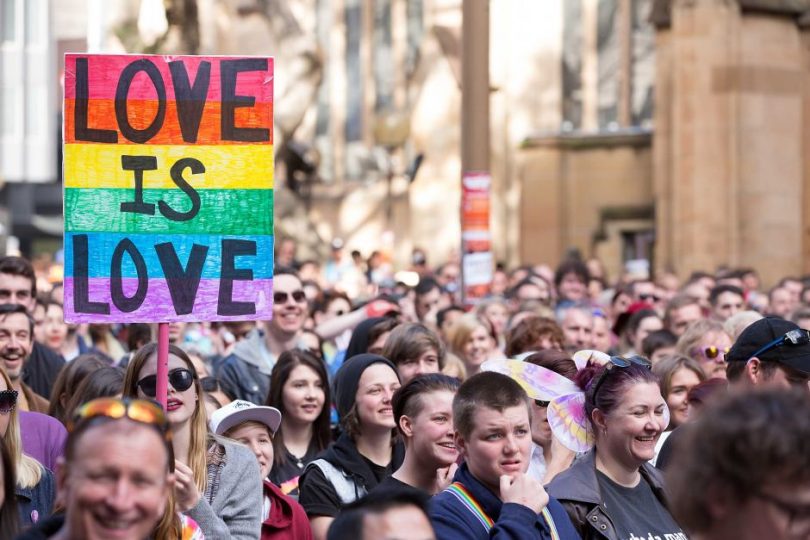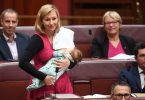In November millions of Australians will have their say about same-sex marriage. Whether the results of the plebiscite will be honoured remain to be seen, but either way the country will get an answer.
For many in the LGBTI+ community equality, in some form, might be closer. But for many gay, lesbian and trans Australians, equality seems as far away as ever.
Rejection, mental illness and violence are just some of the issues which mar the LGBTQ+ experience for many Australians. Soon they may be able to marry but things are still far from equal.
1. YOUTH HOMELESSNESS:
Brisbane Youth Service says more than 20 per cent of the people it helps each year were LGBTQ+, but warns it could be much higher because Australian homeless shelters aren’t required to vet whether their client identify as LGBTQ+.
Overseas the numbers are just as scary. In the US, although queer youth only make 10 per cent of the under 18 population, they comprise 40 per cent of homeless young people.
Conditions for transgender youth appear to be the most difficult, with 20 per cent of transgender adults in their 30s reporting having been homeless at some point in their lives.
2. VIOLENCE:
For many LGBTQ identifying Australians, simply existing and presenting in a way which honors their idenity incites rejection and violence.
The Anti-Violence Project (AVP), a victims’ advocacy group, said domestic violence affects 1 in 3 LGBTI people, a similar rate to non-LGBTI women.
However, the stigma attached to homosexuality, transgender or intersex identity often prevents victims from seeking support.
“LGBTI people face enormous levels of violence in the family home, whether from their parents or their partners.” activist Senthorun Sunil Raj told ABC News last year.
“For example, someone subject to abuse or battery from their partner may fear disclosing that to others if they haven’t been public about their sexual orientation before.
“This limits their access to services and support networks.”
Findings from the Australian Research Centre in Sex, Health and Society, La Trobe University conducted in 2014 discovered 61 percent of LGBTQ+ young people report experiencing verbal homophobic abuse, while a further 18 percent had endured homophobia driven physical violence.
Additionally, it was discovered transgender people experienced significantly higher rates of non-physical and physical abuse compared with lesbians and gay men.
3. ADEQUATE ACCESS TO HEALTH CARE:
For many trans people, gender reassignment – or gender confirmation – surgery acts as a sort of finish line in terms of their physical transition.
For one thing, the surgeries are not fully covered by Medicare, which for many, leaves the option out of reach altogether.
For those lucky enough to be able to shell out thousands for hormones and surgery, they must also obtain a statement from a registered medical practitioner or psychologist to correct their sex on Medicare. This acts as a strange sort of ‘permission’.
Another common complaint from trans Australians is the entrenched discrimination in documentation laws, which they say is leading to “forced sterilisation” for many trans people.
In Victoria, someone who is biologically female must undergo a full hysterectomy in order to have their birth certificate changed to male.
Many people feel they do not require radical surgery to live as their affirmed gender and want the laws changed to make it easier for trans people to be themselves.
Additionally, despite the AIDS epidemic being out of the headlines for more than a few decades, many gay men in Australia still cannot give blood.
The current system operating in Victoria prevents gay and bisexual men from donating blood if they have had sex with other men in the past 12 months.
This is profoundly stigmatising to gay men, some of whom have been with their partners for their whole lives, to be told that their blood poses a public health risk.
4. ELEVATED RISK OF MENTAL ILLNESS:
One in three transgender people will attempt suicide at least once in their life. They are eighteen times more likely to do so than their cisgender counterparts.
For gay and lesbian Australians things aren’t much better with 41.1% aged 16 and over meeting the criteria for a mental disorder diagnosis in the last 12 months.
These statistics are more than just numbers. They represent real Australians with a myriad of tribulations in addition to those that come with the often traumatic experience of growing up.
According to a report put out by the National LGBTI Health Alliance in 2011 mental illness in ‘queer folk’ doesn’t happen because of how they identify but rather due to discrimination and exclusion as key detriments of health.
Homophobia and transphobia are a fear of and prejudice against people perceived to be homosexual or trans respectively, or more generally to not conform to male or female gender norms. These fears are often expressed as stereotyping, ostracising, harassment, and violence.
Heterosexism is discrimination in favour of heterosexual and against homosexual and bisexual people and people who challenge assumptions that there are only two genders. Much like how homophobia and transphobia operates, it excludes LGBTI people by simply ignoring their existence.



